How Smart Monitoring Automation Enhances Incident Management and Ensures Uptime
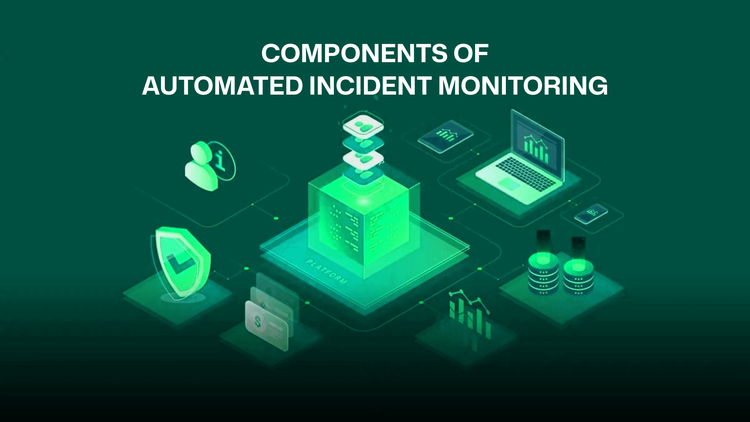
As technology evolves every second, managing IT infrastructure is getting more complex. Organizations continue to face challenges when it comes to server uptime monitoring. Among the tools available, monitoring automation stands out as a transformative solution. This article will demonstrate how businesses ensure reliable operations when leveraging smart automation incident response.
1. What is Automated Incident Monitoring?
Automated incident monitoring does more than just track your system's health. By using advanced web uptime monitor technology like real-time alerts and anomaly detection, automated monitoring aims to predict and resolve problems before they happen. Unlike manual monitoring, automated monitoring doesn’t rely on people, which minimizes errors, and quickly tackles problems.
More and more IT teams are opting for automated incident management tools. According to industry reports, over 70% of IT teams now incorporate some form of automated monitoring, underscoring its critical role in modern infrastructure management.
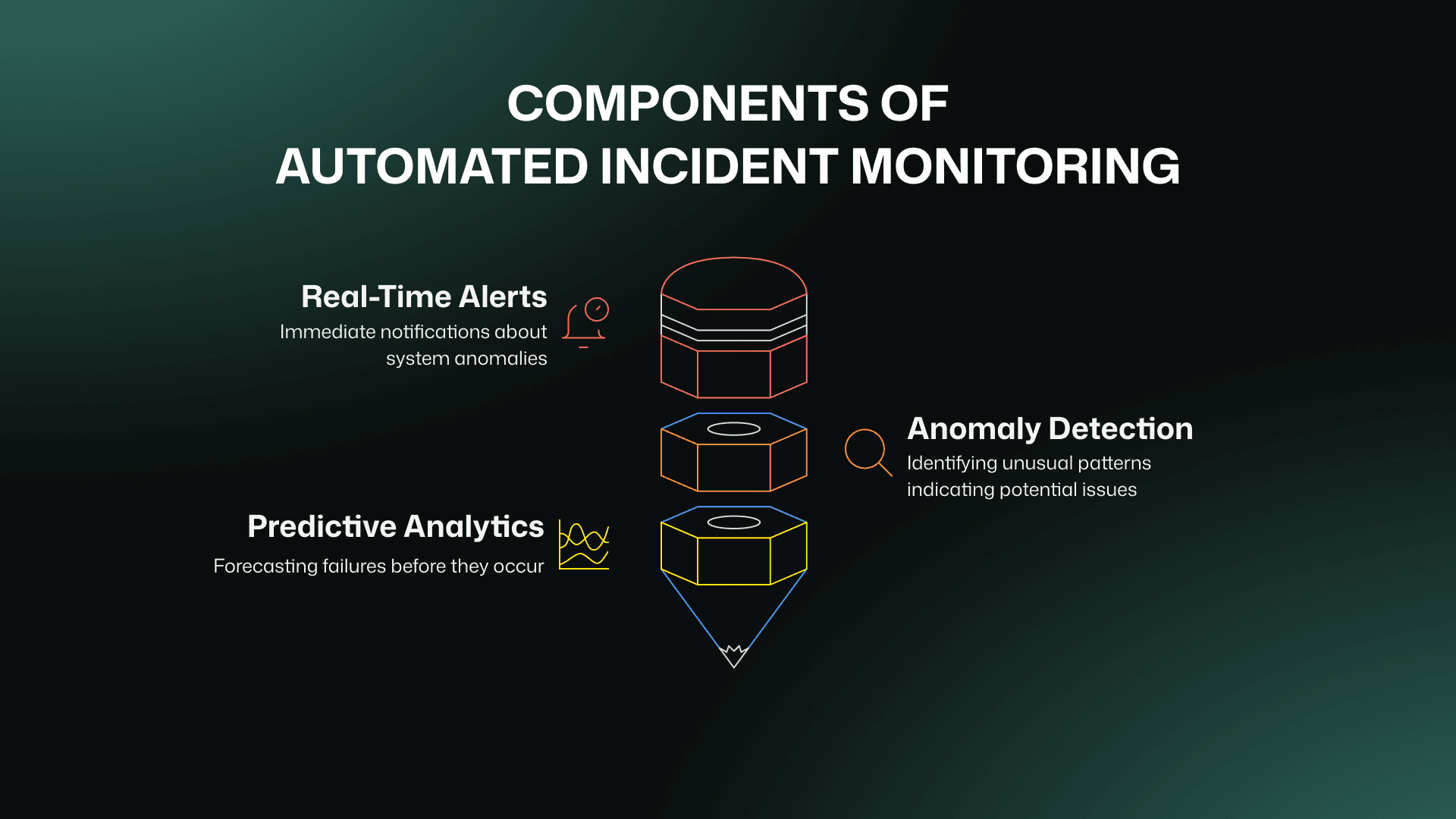
Key characteristics of Automated Monitoring:
- Real-Time Alerts: Immediate notifications about system anomalies.
- Anomaly Detection: Identifying unusual patterns that may indicate potential issues.
- Predictive Analytics: Forecasting failures before they occur.
2. Why Use Monitoring Automation for Incident Management?
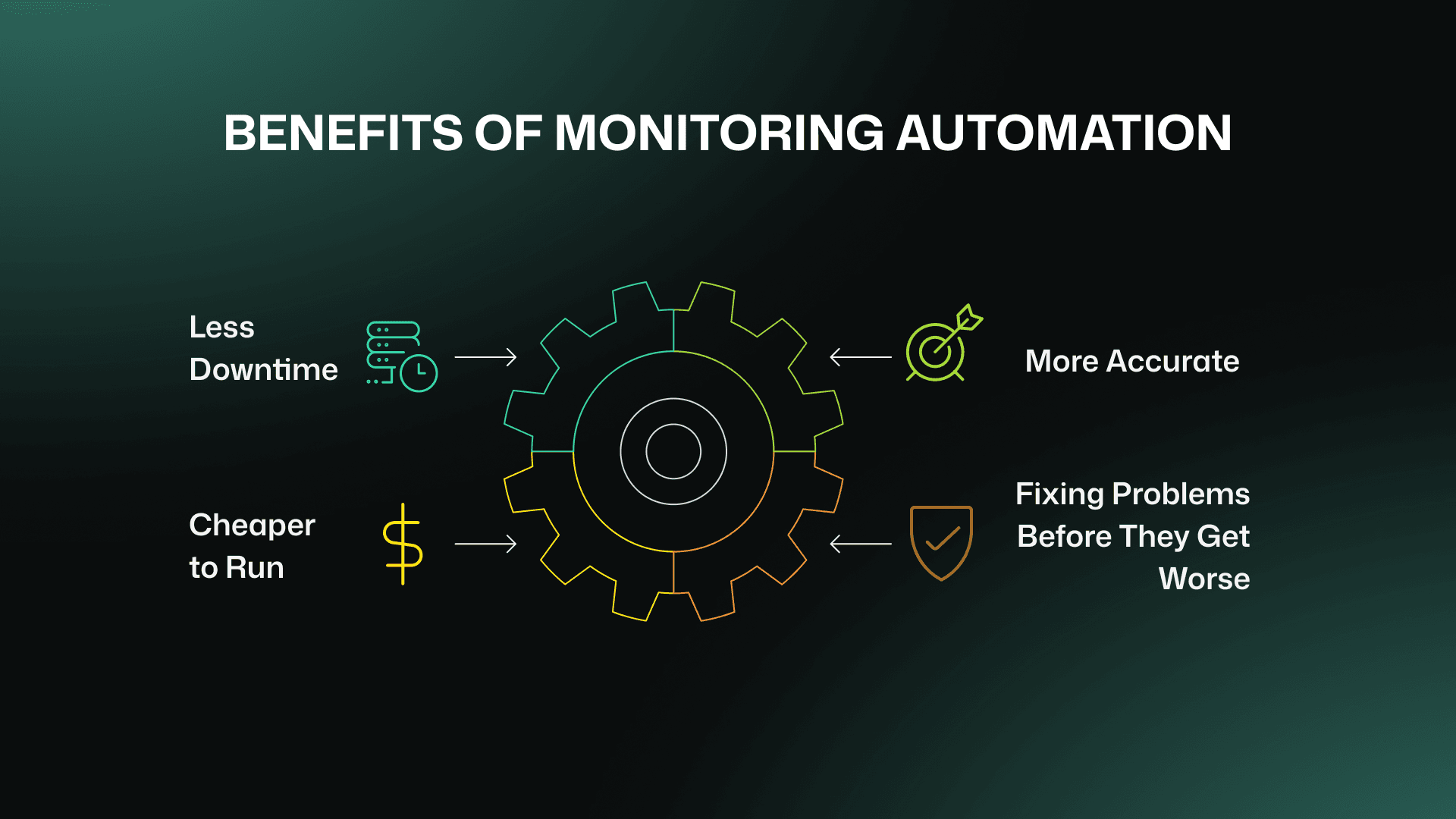
Less Downtime
One of the significant advantages of smart automation incident response is that it helps fix issues faster. Predictive monitoring tools can detect and resolve vulnerabilities before things go down, resulting in less disruption.
More Accurate
Automated systems are better at finding real problems and cutting out the noise. This helps IT teams focus on what’s actually important, enhancing overall efficiency and decision-making.
Cheaper to Run
By minimizing the need for manual intervention, monitoring automation lowers operational costs. IT teams can allocate resources more effectively, and save money in the long run.
Fixing Problems Before They Get Worse
With monitoring automation, organizations can anticipate and mitigate problems before they escalate. This approach enhances system reliability and nurtures customer trust.
3. How Smart Monitoring Automation Works
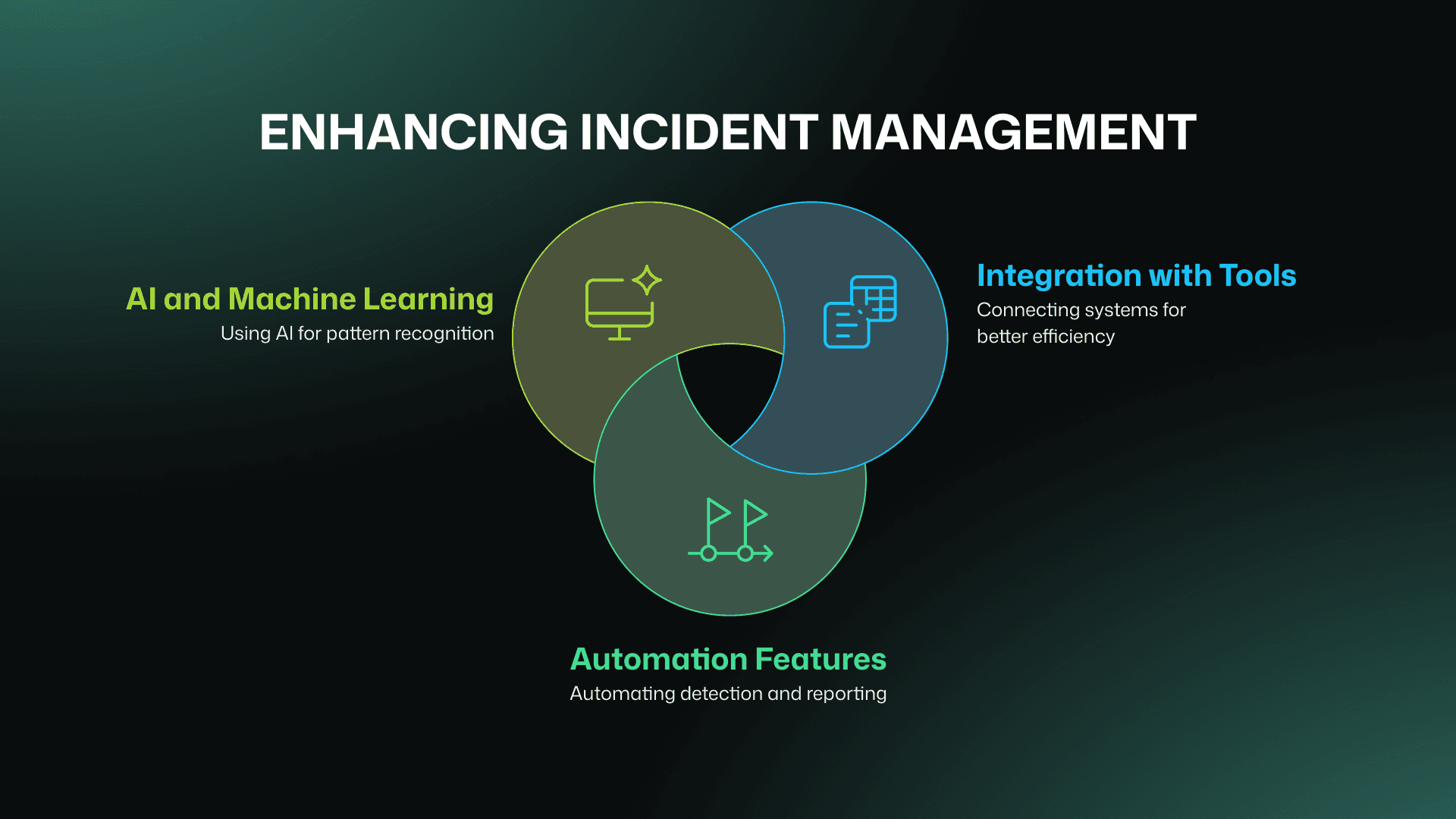
Integration with Incident Management Tools
Monitoring systems easily connect with incident response platforms, making workflows more efficient. For example, integrations with ticketing systems and communication tools ensure that issues are assigned and resolved promptly.
Automation Features
- Incident Detection: Advanced analytics pinpoint issues quickly.
- Streamlined Workflow: Automated processes for assigning and managing incidents.
- Post-Incident Reporting: Automated summaries for continuous improvement.
AI and Machine Learning Help
AI plays a big part in making incident management better. By finding patterns and improving responses, AI makes automated systems work faster and more accurately.
4. Best Ways to Set Up Automated Monitoring
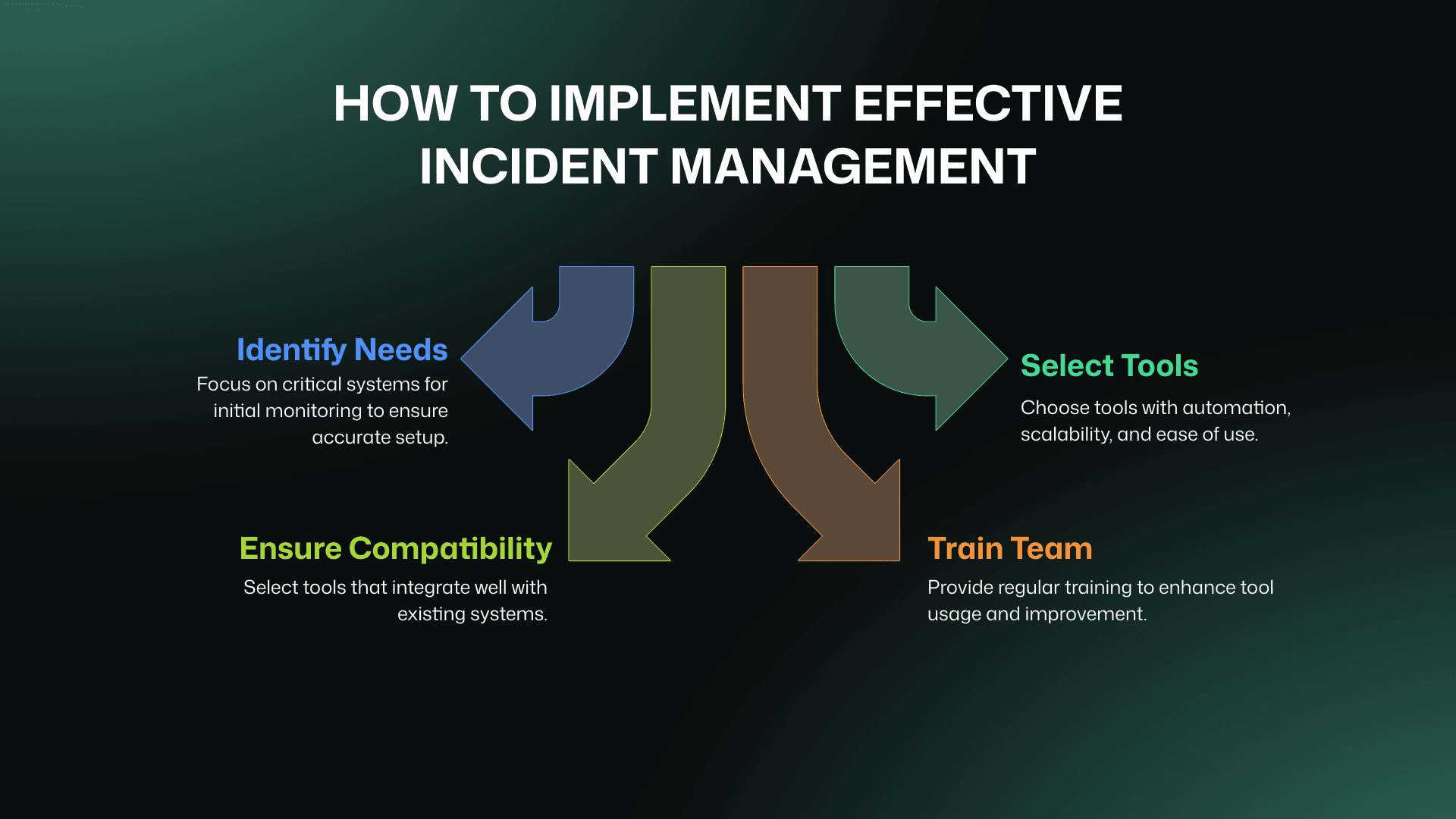
Start by Figuring Out What You Need
Identify your most important systems and start monitoring those first. Knowing what you need is key to getting things right.
Pick the Right Tools
Look for incident management tools with good automation. Make sure they can grow with you, are easy to use, and work well with your current systems.
Make Sure Everything Connects Well
Choose tools that work with your current IT setup. Good compatibility makes everything run smoother and more efficiently.
Train Your Team
Make sure your team knows how to use and improve the automated systems. Regular training helps everyone use the tools well.
Keep Things Updated and Tested
Keep improving things. Regularly testing and updating your systems will keep them reliable and efficient.
5. Real Examples of Smart Automation in Action
Stopping Server Outages Before They Happen
A big online store used automated monitoring to see when their servers were under pressure during busy hours. The system flagged problems, so the IT team added more resources beforehand, avoiding downtime.
Managing Cloud Systems
A tech company used smart automation incident response to watch its cloud setup. The system saw odd data traffic and sent an alert, preventing a potential security issue.
6. How Bubobot Can Help Your Business
Bubobot provides comprehensive uptime website monitoring solutions to transform your incident management process:
- Free Uptime Monitoring: Watch your API health 24/7 so things keep working
- Smart Alerts: Escalation policies ensure issues get fixed quickly
- Checks Every 20 Seconds: Find problems early
- Scalable Options: Flexible pricing that fits different team sizes
7. The Future of Incident Management with Smart Automation
Things are changing fast, and monitoring automation is only going to get better. Predicting problems will get more accurate, helping businesses deal with bigger challenges. AI-powered incident management tools will help improve how quickly you respond and make decisions.
8. Conclusion
As the IT landscape gets more complex, monitoring automation gets more important. By using automated incident monitoring, companies can become more efficient, accurate, and reliable. It’s a good idea to start using smart automation incident response to keep everything running smoothly.
Take the first step towards reliable IT operations. Try Bubobot and see what the future of incident management looks like.